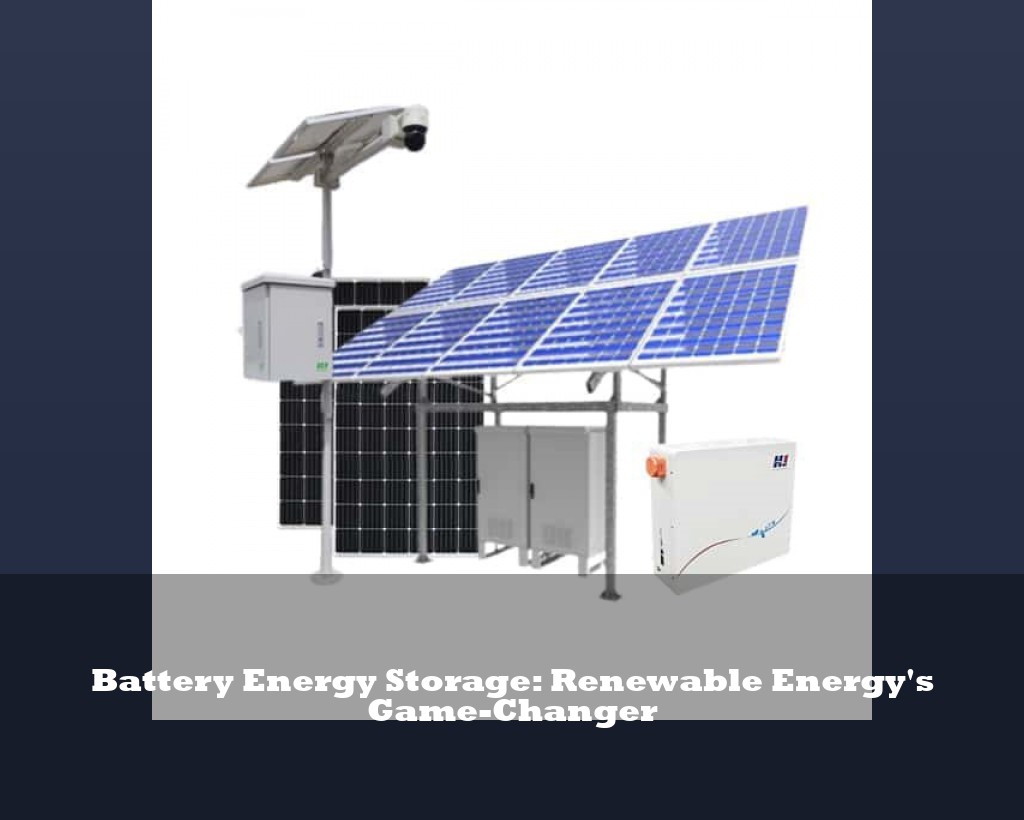Battery Energy Storage: Renewable Energy's Game-Changer
Let's face it – solar panels and wind turbines alone won't solve our energy crisis. The real bottleneck? Storing that clean energy for when the sun isn't shining or wind isn't blowing. Here's the kicker: Global renewable capacity grew 50% last year, but energy storage installations only increased by 15%. That's like building a Ferrari but forgetting the gas tank!
Battery Energy Storage: Renewable Energy's Game-Changer

Table of Contents
The Renewable Energy Storage Challenge
Let's face it – solar panels and wind turbines alone won't solve our energy crisis. The real bottleneck? Storing that clean energy for when the sun isn't shining or wind isn't blowing. Here's the kicker: Global renewable capacity grew 50% last year, but energy storage installations only increased by 15%. That's like building a Ferrari but forgetting the gas tank!
Take Australia's situation. When Valent Energy announced their 1.6GW battery storage pipeline in February 2024, it wasn't just corporate news – it was a survival strategy. Their 240MW Mornington project alone can power 100,000 homes during peak demand. But why should you care? Because this storage gap directly impacts your electricity bills and grid reliability.
The Valent Energy Blueprint
Valent's approach combines three smart moves:
- Deploying grid-scale batteries near existing transmission lines
- Using modular designs that scale from 50MW to 500MW
- Integrating AI-powered energy trading algorithms
Their secret sauce? "We're not just building batteries – we're creating virtual power plants," explains Valent's CTO in a recent interview. This strategy helped them secure 610MW of approved projects in just 18 months.
Battery Tech Breakthroughs You Can't Ignore
While lithium-ion dominates today's market, 2024's European Zero-Carbon Summit revealed some plot twists:
- Sodium-ion batteries reaching commercial viability (40% cheaper than lithium)
- Flow batteries achieving 12-hour discharge durations
- AI-optimized battery management systems boosting lifespan by 30%
China's recent breakthrough in Prussian blue sodium batteries could be a game-changer. By stabilizing crystal structures, researchers achieved 5,000-cycle durability – that's nearly 15 years of daily use. Imagine what this means for solar energy storage in residential areas!
What Recent Market Shifts Mean for You
Here's where it gets personal. The 20 billion AUD investment by Valent's backers isn't just corporate maneuvering – it's reshaping energy economics. When utilities can store cheap midday solar power for evening peaks, your time-of-use rates become fairer.
But wait – there's a catch. Current battery production can only meet 60% of projected 2025 demand. That's why forward-thinking companies like Huawei are developing modular storage solutions that combine different battery types. Their new microgrid controllers allow seamless mixing of lithium, sodium, and flow batteries in one system.
The bottom line? Whether you're a homeowner considering solar panels or a factory manager planning energy upgrades, understanding these storage innovations is no longer optional – it's financial survival in our electrified world.
Related Contents

Battery Energy Storage: Renewable Energy's Game-Changer
Let's face it – solar panels and wind turbines alone won't solve our energy crisis. The real bottleneck? Storing that clean energy for when the sun isn't shining or wind isn't blowing. Here's the kicker: Global renewable capacity grew 50% last year, but energy storage installations only increased by 15%. That's like building a Ferrari but forgetting the gas tank!

Battery Energy Storage Systems (BESS): The Brain Behind Renewable Energy Revolution
Ever wondered why your solar panels stop working at night? Or why wind farms sometimes pay customers to take their excess electricity? The answer lies in energy storage - or rather, the lack of it. As of March 2025, over 30% of renewable energy generated worldwide gets wasted due to inadequate storage solutions. That's enough to power entire cities!

Battery Energy Storage Systems: Powering Renewable Energy Transition
You know how people talk about renewable energy like it's some magic bullet? Well, here's the kicker: solar panels don't work when it's cloudy, and wind turbines stand still on calm days. This intermittency problem costs the global economy $12 billion annually in wasted clean energy - enough to power 15 million homes. That's where battery energy storage systems (BESS) come charging in, quite literally.

Battery Energy Storage Systems: The Brain Behind Renewable Energy Revolution
Let’s cut through the jargon first. A Battery Energy Storage System (BESS) isn’t just a fancy battery pack—it’s the central nervous system of modern renewable energy setups. Imagine your smartphone battery, but scaled up to power factories, neighborhoods, or even entire grids. Unlike traditional power plants that generate electricity on demand, BESS stores excess energy when production exceeds consumption and releases it when needed. Think of it as a giant energy savings account with instant withdrawal capabilities.

Battery Energy Storage Systems (BESS): Powering the Renewable Energy Revolution
California's grid operators curtailed enough solar energy in 2023 to power 1.5 million homes for a year. That's the equivalent of throwing away 1.4 billion pounds of coal's energy potential. Meanwhile, Texas faced rolling blackouts during a winter storm while wind turbines stood frozen. This energy paradox - abundance vs. scarcity - lies at the heart of our renewable energy challenges.
